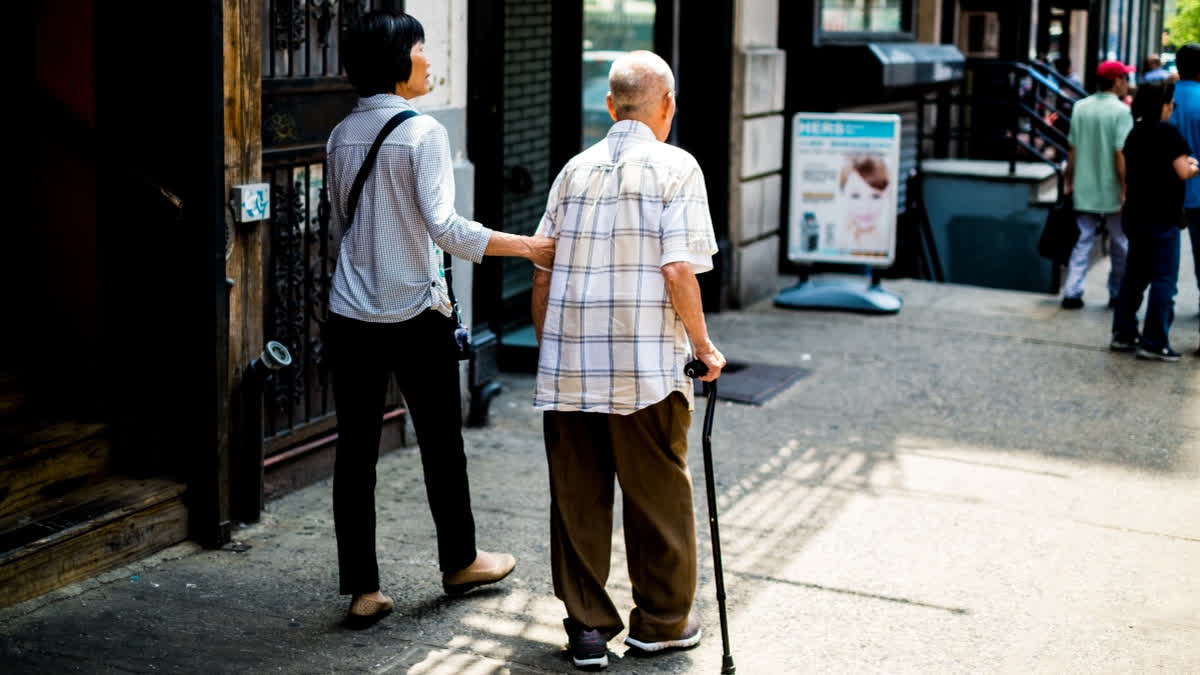New Delhi: As individuals age, a condition known as 'Duck-Walk' or waddling gait can occur due to knee malalignment caused by osteoarthritis. This condition often leads to individuals walking with a distinctive gait resembling that of a duck. However, in the early stages of osteoarthritis, there are conservative methods that individuals can employ to prevent or delay the progression to an advanced stage. Let us delve into some detailed information about the exercises that can help individuals prevent the progression of ‘Duck-Walk’ due to advanced osteoarthritis and maintain normal mobility even when they age.
First and foremost is weight reduction: One of the most effective ways to prevent or slow down the progression of 'Duck-Walk' is through weight reduction. By maintaining a healthy weight, the force exerted on the knees is reduced, resulting in a decreased likelihood of deformity progression. Incorporating a balanced diet and regular exercise can help individuals achieve and maintain a healthy weight, which is beneficial for overall joint health.
Also read: Study reveals why we lose fat, muscle during infection
Exercises to Avoid ‘Duck-Walk’ in Old Age;
Prone Leg Hangs: This exercise involves lying in a prone position on a bed with the knees positioned at the edge of the table and a rolled towel placed underneath for support, allowing the lower part of the legs to hang in the air but straight in alignment with the knees. Individuals should aim to perform this exercise for 10 minutes, twice a day. Prone leg hangs help certainly reduce flexion or knee bending deformities causing the 'Duck-Walk.'
Core Abdomen Strengthening: Strengthening the core and spine muscles is essential for maintaining proper posture and stability. By engaging in exercises that target the abdomen and lower back muscles, individuals can improve overall hip and thigh muscle strength, which directly impacts walking ability.
Quadriceps Strengthening: Strong quadriceps muscles at the front of thigh play a crucial role in maintaining proper knee kinematics. Exercises such as leg extensions, and lunges can help strengthen the quadriceps and provide better support for the knees.
Hamstring Strengthening: The muscles at the back of the thighs, known as the hamstrings, are vital for maintaining balance and stability during walking. Strengthening these muscles through exercises like leg curls and bridges can improve overall leg strength and reduce the likelihood of a waddling gait.
Vastus Medialis Oblique (VMO) Strengthening: The VMO muscle, located on the inner thigh, plays a crucial role in knee stabilisation. Exercises like leg presses, step-ups, and inner thigh squeezes can target and strengthen the VMO, helping to alleviate knee malalignment.
Exercise Precautions and Benefits of Preventive Measures: While exercise is essential for preventing 'Duck-Walk,' it's important to avoid certain positions and exercises that may exacerbate knee pain or discomfort. Squatting and cross-legged sitting should be avoided, as they can place excessive stress on the knees. It is always recommended to consult with a healthcare professional or physical therapist before starting any exercise program. By diligently practicing weight reduction and engaging in targeted exercises, individuals can potentially avoid or delay the progression of osteoarthritis of the knee. Prevention is always better than cure.
Preventing 'Duck-Walk' in old age is possible through a combination of weight reduction and targeted exercises. In some cases, offloading braces can be beneficial for individuals experiencing 'Duck-Walk.' These braces redistribute the weight and provide support to the affected knee, relieving pressure and reducing the waddling gait. By taking proactive steps to maintain joint health and mobility, individuals can enjoy an active and independent lifestyle as they age. (IANS)
(This story has not been edited by ETV Bharat and is auto-generated from a syndicated feed.)



